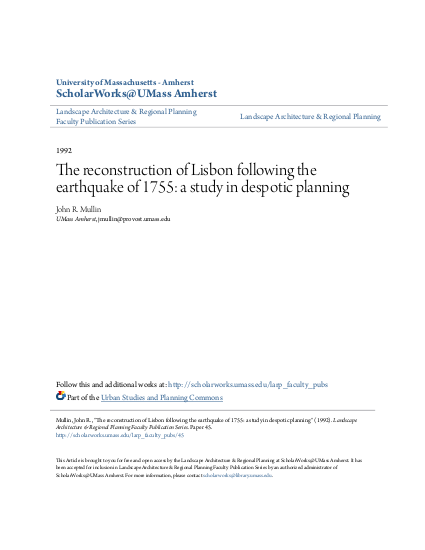
This paper is a description and analysis of the plan for the rebuilding of Lisbon following the earthquake of 1755. This tremor was so devastating that the entire city centre, the Baixa, ceased to exist. From this chaos emerged the Marquês de Pombal who, with the approval of the King, immediately brought order and began to develop efforts to create the new Lisbon. The effort first focused upon the development of four options that included rebuilding the city as it was, reconstructing the city with minimal improvements to the street pattern, undertaking a total rebuilding effort or starting fresh on a new site. After considerable analysis, Pombal selected the option to build under the ‘clean slate’ option. After selection of this option, the planners created six detailed plans. After considerable review, the dos Santos concept was selected. These six plans, designed largely by military engineers, were created with the intent of furthering Pombal’s goal of creating a city that reflected new values. The city was to reflect a society in which the citizen, the merchant and the bureaucrat took precedence over the crown, church and nobility. The results were indeed a new Lisbon.
Resource collections
- Earthquakes
- Leadership
- Learning from crises
- UN Habitat - Urban Response Collection
- Urban Response - Urban Crisis Preparedness and Risk Reduction
- Urban Response Collection - Community Engagement and Social Cohesion
- Urban Response Collection - Economic Recovery
- Urban Response Collection - Environment and Climate Change
- Urban Response Collection - Housing, Land and Property
- Urban Response Collection - Urban Crisis Response, Recovery and Reconstruction
- Urban Response Collection - Urban Resilience